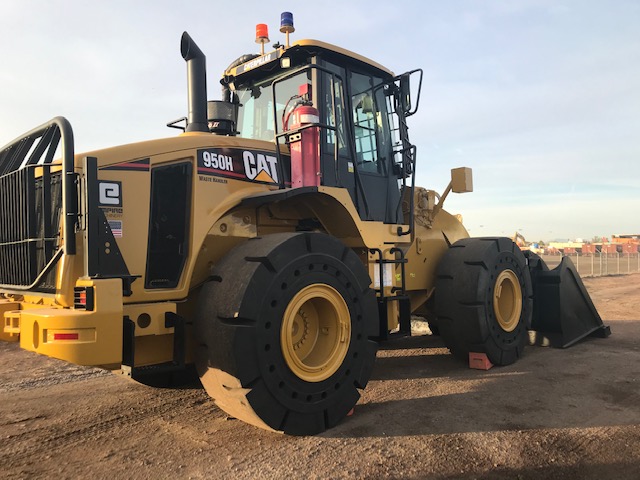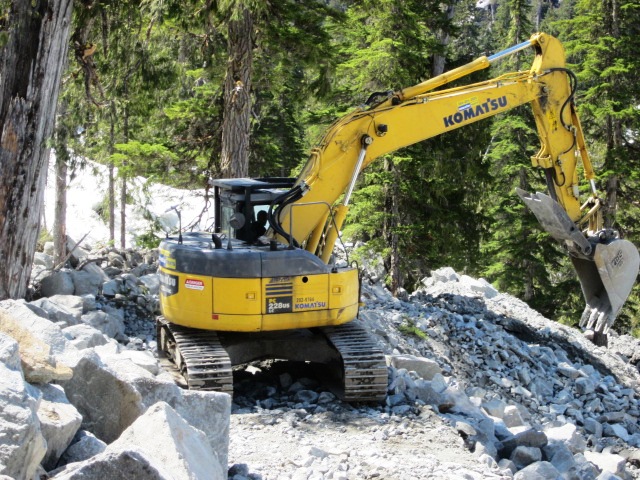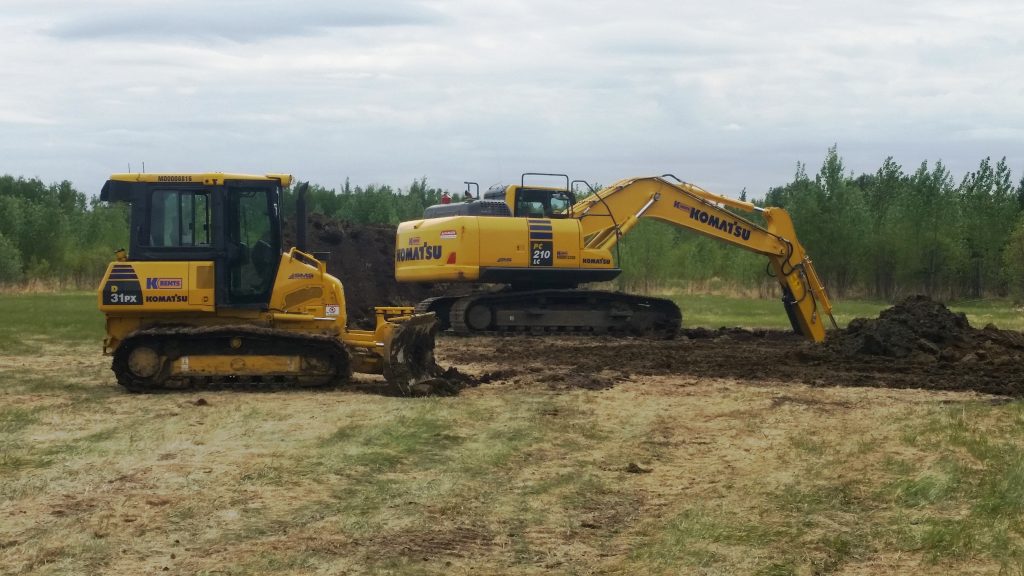How to become a leader in heavy equipment fleet management
AEMP focuses on developing and growing the skills of those in the heavy equipment fleet management industry through resources and relationships.
The right training is key to creating efficiencies, and fleet management certification can help elevate asset managers into increasingly valuable roles in their organizations.
By Karen Scally
The profit is no longer in the iron for heavy equipment fleet management.
It’s in how you perform the job, says Matt Cox, director of asset management for Lehman-Roberts.
The right training is key to creating efficiencies, and fleet management certification can help elevate asset managers into increasingly valuable roles in their organizations.
In the past, Cox says heavy equipment owners would often focus on winning work to at least cover the equipment they had financed.
“If you bought a piece of equipment, let’s say a road grader, and you financed it for $300,000, all you had to do was get enough jobs to pay the note on that,” he says. “At the end of the term, if you had some residual value left over, the profit was literally in the iron sitting in your yard. And that’s absolutely not where we’re at today.”
Current fleet managers need to master distinct skills to control their department’s costs. Cox says the Certified Equipment Manager (CEM) designation he earned from the Association of Equipment Management Professionals (AEMP) has been instrumental in shaping processes that pave the way for profitability.
The AEMP offers a certificate program (Equipment Management Specialist) and two certifications (Certified Equipment Manager and Certified Equipment Support Specialist) for fleet professionals, and it provides the only resources specifically designed to professionally develop equipment managers, says Donte Shannon, FASAE, CAE, the CEO of AEMP.
“We offer everything from fleet management and maintenance essentials to financial management to benchmarking. We have a number of core content areas focused on education and training to give the full breadth of being a holistic, successful equipment manager,” Shannon says. “So the investment … comes back sometimes even tenfold to the company, because your staff person is learning how to create efficiencies in order to save the company money.”
How can you tap into the value that fleet manager certification provides for you and your organization? Read on to find out.

What it is: The Equipment Management Specialist (EMS) certificate course is designed for those who are new to heavy equipment fleet management (less than five years of experience) or as the first step to get a CEM designation. It is also ideal for organizations that are looking to create an equipment manager role, covering 17 core competencies essential for asset management.
Format: Self-guided online program available through AEMP University.
Time commitment: Estimated 35-40 hours; course materials available for one year after enrollment.
Requirements: No requirements
What it is: The Certified Equipment Manager (CEM) is the industry’s premier recognition of fleet management qualifications, demonstrating a mastery of five standards and 17 core competencies.
Format: Exam offered during in-person AEMP Connect and Equipment Shift conferences or at a local certified testing center.
Time commitment: Four to five hours spent studying each chapter of the Career Equipment Fleet Manager Manual.
Requirements: Minimum five years of equipment management experience plus 25 “points” of accumulated experience and continuing education hours in order to complete the application packet for the exam.
What it is: The Certified Equipment Support Professional (CESP) is designed for dealer, supplier, and other vendor representatives to demonstrate superior knowledge of fleet management requirements in order to better serve their customers. The designation covers what a CEM needs to know plus material specific to customer support.
Format: Exam offered during in-person AEMP Connect and Equipment Shift conferences or at a local certified testing center.
Time commitment: Four to five hours spent studying each chapter of the Career Equipment Fleet Manager Manual.
Requirements: Minimum five years of equipment management experience plus 25 “points” of accumulated experience and continuing education hours in order to complete the application packet for the exam.
AEMP offers an online course, called the IGNITE Learning Lab, to help individuals prepare for their CEM and CESP exams.

The IGNITE Learning Lab, which is not required in order to take certification exams, features online instructor-led study over a seven-week period.
At the beginning of each week, recorded instruction, taught by a team of experienced CEMs, and handouts covering a new focus area are released. Quizzes help participants assess how well they are absorbing the material, which should take about four to six hours a week.
Students that participate in the course online who want to take their CEM or CESP exams afterwards can do so through AEMP. The Certification Commission is considering the advantages of moving the exams to an online format as well.
Those who have received fleet management certification say it has greatly influenced the ways they perform their jobs, providing an in-depth framework to enhance their decision-making.
We spoke with four professionals in fleet management who detailed the results they have seen and how it’s impacted their operations. Here’s what they had to say.
Waste Management, equipment maintenance manager
An announcement on Waste Management’s internal company portal caught the eye of Mindy Brown, the maintenance equipment manager for Southern Arizona and New Mexico.
Two employees had recently earned their EMS certificates from the AEMP.
Though Brown already had a goal to earn the CEM, she had never heard of the EMS. She was intrigued, and after learning more, thought it would be a good first step towards the CEM.
Brown had previously worked for Michelin as a sales rep and was recruited to join Waste Management as a fleet manager.
“Having been in the position I was in with Michelin for 16 years, I was basically accustomed to looking from the axles down, not the whole scene,” Brown says. “Then I became a senior district fleet manager, and it is a completely different wheelhouse.”
What the EMS course does for someone that is newer to fleet management is it covers all facets of the role.
“There’s a misconception out there that people think we’re glorified parts orderers — you know, all we do is order parts,” she says. “We’re not just ordering parts. The role goes into this whole menagerie of things that interconnect with the bigger picture.”

Brown says the EMS course provided several benefits for her. First, it better prepared her for monthly P&L meetings with Waste Management leadership. Second, she says the EMS refocused her on the priorities of the job.
And perhaps most importantly, she says it gave her the tools to communicate more effectively with her team of nine service technicians, helping them understand the broader impact the fleet department has on the overall success of the company.
“What you do — and what you don’t do — matters: in terms of data, in terms of reporting, in terms of photos, in terms of quality PMs, or even charging parts out,” Brown says. “This affects this huge picture, not just your little window from 7 a.m. to 4:30 p.m. every day.”
With her EMS training, Brown says she was able to get her team reporting correctly and embrace the value of their data, which is the only way company leadership will know exactly how their sites are running.
“I think one of the biggest takeaways I can attribute to it is that it helped prep me to help prep others,” she says. “My main goal with my team is to promote them.”
She is now recommending the course to other team members to further their own growth and sharing how it will open up their eyes to the potential influence they can have.
“This course will help you take the blinders off from this tunnel vision view that you have,” Brown says. “It gives you a much clearer view of what your job entails and everything you touch, and how that affects everything within the company.”
Find out how fleets like yours are automating their parts orders for their teams and vendors, resulting in real-time insights that give them a competitive advantage.
SMS Equipment, fleet maintenance manager
As a heavy equipment mechanic, Greg Wiens took advantage of the many training opportunities available for the profession to hone his skills.
So when he was promoted to fleet maintenance manager at SMS Equipment, he started searching for applicable courses for his new role.
“The place that I found the best fit — that was the most direct at fleet maintenance managers and just fleet maintenance in general — was the AEMP,” Wiens says.
He says that service technicians stepping into fleet management cannot rely only on their equipment knowledge, because there is so much more to the job than that.
“We’re more asset managers than maintenance managers and that requires another skill set,” he says.
Wiens says SMS Equipment, a dealer that carries mostly Komatsu equipment with branches throughout Canada and also has a rental fleet, supported him pursuing his CEM and going through the IGNITE Learning Lab, which he did at an AEMP Connect conference that preceded ConExpo-Con/Agg. He says he spent a couple months leading up to IGNITE studying the Career Equipment Fleet Manager Manual and materials.

Not only was he able to kill two birds with one stone by attending the course and visiting the trade show to meet with his vendors, Wiens says he found the peer-to-peer interaction during training particularly valuable. He realized he wasn’t alone in many of the challenges he faced and common solutions often existed.
The exam itself is quite rigorous, and Wiens says he didn’t pass the first time.
“I wasn’t as prepared as I thought I was,” Wiens says. “It gave me a good judgement of where my weaknesses were, and where I needed to go back and study some more.”
Though he had years of maintenance experience under his belt, Wiens says he was less familiar with the financial side of equipment management. Currently, SMS Equipment is shifting how they lifecycle their machines, and Wiens says he has been able to apply his CEM training to the budgeting.
“When you’re a mechanic, you’re not always aware of all the numbers that are in the background,” Wiens says. “I look at these numbers now on the ROI and the revenue of the machine, and I see the repairs — and I understand that maybe this is a machine we need, even though it’s not at that point in its lifecycle, to start talking to management about getting rid of, because it’s really going to be an issue.”
The insights and materials he received from obtaining his CEM is something Wiens says he relies on regularly.
“The manual is a great reference book,” he says. “I think the information in there is second to none.”
Lehman-Roberts, director of asset management
Matt Cox’s promotion to director of asset management at Lehman-Roberts came with a string attached.
He needed to get his CEM within the year.
“It’s one of those expectations that if you’re going to be in this role, you need to complete the requirements for becoming a CEM,” Cox says.
In addition to going through the IGNITE Learning Lab, Cox says two other things helped him prepare for the CEM. First, he had 13 years of experience as a U.S. Army Commissioned Officer and MEDEVAC pilot where he oversaw the maintenance on a unit of 15 helicopters. Second, he had recently graduated from the University of Memphis Executive MBA program, so a lot of the financial components were fresh in his mind.
“This stuff isn’t easy,” Cox says. “You can’t just act like how fleets were 40 years ago, where you run it until it breaks and then you go get tools out of the shop and fix it. It’s very complex with having to understand your cost per ton or your cost per hour to run a machine. You need to understand your limitations of what you can do and what you need to rely on your vendors to help out with.”
Cox says the principles of the CEM are not necessarily intuitive, and to succeed in this role, fleet managers must understand that times have changed.
“There’s a legacy way of handling equipment maintenance, and then there’s what’s required of a modern equipment manager,” he says. “And it’s vastly different.”

When he entered the asset management position for the Memphis, Tennessee-based paving contractor, Cox says he didn’t appreciate how much financial responsibility it had.
“When you start talking about the budget of an equipment division, at times it can be 10-20% of the top line revenue of a company,” he says. “That’s a massive impact. And that is one of the stated goals of AEMP is to elevate the equipment manager into the C-suite, and rightfully so, because of the gravity of what we impact.”
Today’s equipment managers need to know how to partner strategically with vendors, how to lifecycle equipment, how to maximize the value of the fleet, how to set utilization rates, and much more, Cox says. All of this requires specific training, and that’s what IGNITE and the CEM designation provides.
But Cox wants to emphasize it’s just a start.
“I would caution people if they think that they’re going to take the IGNITE course, and all of a sudden, you’re going to have this body of knowledge and that you can then rest on your laurels after passing that exam, that’s not what it’s about,” he says. “Being a continuous learner and getting involved in AEMP, that’s really key.”
Kirby-Smith Machinery Inc., vice president, crane division
While working as a sales rep at his previous employer, Rickey Bailey noticed that most of his fleet manager customers had something in common.
They all had their CEM.
Though Bailey had 20 years of experience in the industry, he learned he could grasp the fleet manager’s world even better through the CESP designation, which is designed for vendor representatives by building on the CEM objectives.
“I just felt like it was the right thing to do to try to understand where they spent their time, other than just how much something costs,” Bailey says. “It’s helpful to know what the pressure points are and what exactly it is they’re trying to accomplish.”
Even with all his time spent working with fleet managers on their equipment needs, he says getting his CESP provided insights to responsibilities he didn’t realize they had.
“It made me appreciate how detailed these guys have to get into the financials, environmental concerns, and safety concerns,” he says.

Now as the vice president of the crane division for Kirby-Smith Machinery Inc., a dealer with 12 branches throughout Oklahoma, Texas, Kansas, Missouri, and Southern Illinois, Bailey says having his CESP helps demonstrate his qualifications to his customers who have their CEMs. He says they know the kind of work he has put in to comprehend their needs and challenges.
“They understand what you’ve done and what you’ve been through from a certification standpoint, and it’s appreciated and recognized,” Bailey says.
Bailey says the CESP allows dealer and supplier representatives to distinguish themselves by showing how much they care about their customers’ success — not just their own.
“Participating in the CESP furthers support professionals’ knowledge and understanding of what it is your customers are trying to accomplish, especially if new to the industry,” he says. “As soon as you meet the eligibility requirements, I would say it’s a good thing for manufacturers and distributors alike. And it’s just a great way to get involved in the industry.”
The CEM and CESP designations must be renewed every five years by completing 40 hours of continuing education during that time; no retesting is required.

AEMP offers about 35-40 CE hours each year that can be obtained by attending its conferences or webinars, participating on committees, and serving in volunteer roles. The association also recognizes relevant CE opportunities available from outside organizations.
Shannon says the next step for fleet professionals interested in pursuing further development through certification is to discuss the value of this investment with their employers.
Further details, including tuition costs, are available at www.aemp.org.
If fleet professionals encounter questions from their employers or budget is not available to fund professional development, Shannon encourages reaching out to the association’s leadership.
“We certainly want to be able to work with people who may not have the resources to invest personally, but just need to be able to get engaged with us,” Shannon says.
AEMP focuses on developing and growing the skills of those in the heavy equipment fleet management industry through resources and relationships.
Rapidly changing technology and shifting priorities are fundamentally reshaping the functions of construction fleet management.
Discover everything you need to know to succeed at leading a heavy equipment fleet, from starting out to your salary range.
Stay up to date with the latest parts and fleet resources from the Gearflow Blog.